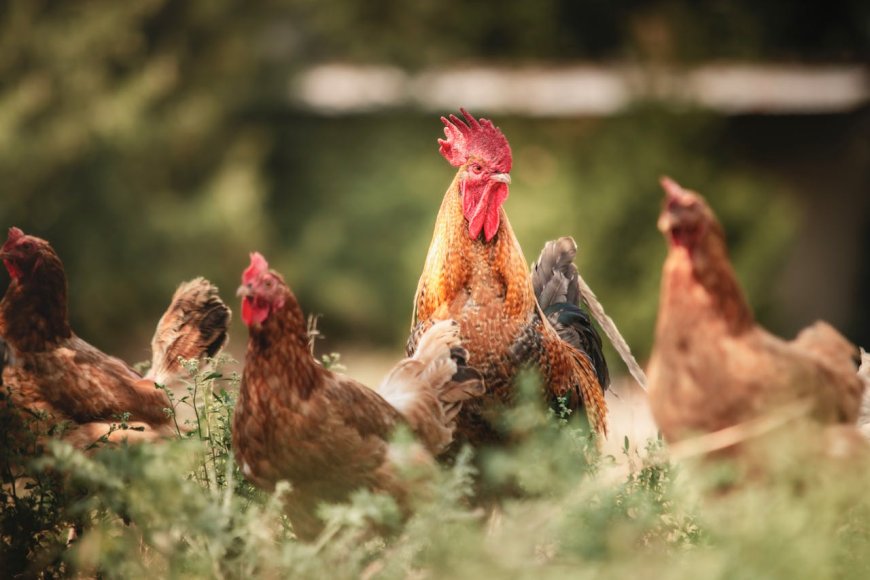Top 5 Poultry Farming Strategies for High Returns in 2025 (Plus Key Mistakes to Avoid)

Starting a poultry farming business can be a lucrative venture, but it requires careful planning and a clear strategy to ensure high returns. In 2025, the poultry industry continues to evolve, driven by technological advances, changing consumer preferences, and environmental concerns. To succeed, it’s crucial to apply proven strategies and avoid common mistakes. Below are five key strategies, based on current trends and research, to help you start a successful poultry business and achieve high returns.
1. Choose the Right Breed for Your Market
The success of your poultry business hinges on selecting the right breed of chickens. Different breeds serve various purposes—some are best for egg production, while others excel in meat yield. For instance, if you're targeting egg production, breeds like Leghorns and Rhode Island Reds are known for high egg output. For meat production, Cornish Cross and Jersey Giants are popular.
Key considerations:
- Market demand: Conduct research to understand consumer preferences in your region. Do they prefer free-range eggs or broiler meat? Organic or conventional products?
- Breed resilience: Some breeds are more disease-resistant and adaptable to environmental conditions, reducing your risk of loss.
Pitfall to avoid: Don’t rush into buying chicks without researching the best breed for your business model. Many first-time farmers purchase breeds that don’t align with market demand or local conditions, resulting in low returns.
2. Optimize Feed and Nutrition
One of the highest costs in poultry farming is feed, and it directly affects the productivity of your flock. In 2025, sustainable and organic feeding options are gaining popularity, but they require careful management to avoid overspending.
Strategies for optimizing feed:
- Balanced nutrition: Ensure your chickens receive a balanced diet, with adequate protein, minerals, and vitamins for their growth stage (starter, grower, finisher).
- Feed additives: Consider probiotics and enzymes that enhance digestion and nutrient absorption, leading to better growth rates and lower feed waste.
- Sustainable feeding: Explore locally available feed ingredients that reduce costs while maintaining nutritional quality.
Pitfall to avoid: Avoid cutting costs by compromising on feed quality. Poor-quality feed can lead to low growth rates, poor egg production, and increased susceptibility to diseases, ultimately impacting your profitability.
3. Leverage Technology and Automation
The future of poultry farming in 2025 is tech-driven. Farmers who adopt technology will have a competitive edge, as automation reduces labor costs and increases efficiency.
Technological innovations to consider:
- Automated feeding and watering systems: These systems save time and ensure consistent nutrition and hydration, crucial for healthy growth.
- Climate control systems: Maintaining the right temperature and ventilation in poultry houses can prevent diseases and stress among birds, increasing productivity.
- Data monitoring tools: Advanced sensors can monitor poultry house conditions like temperature, humidity, and air quality, alerting farmers to any potential issues before they escalate.
Pitfall to avoid: Failing to adopt technology can lead to inefficiencies. Relying solely on manual labor for feeding, cleaning, or monitoring increases the risk of human error, which could harm the health of your flock and your bottom line.
4. Implement Biosecurity Measures
Infectious diseases are a significant threat to poultry farming, with diseases like avian flu capable of wiping out entire flocks. In 2025, the focus on biosecurity is more important than ever, as global supply chains and climate change increase the risk of disease outbreaks.
Best biosecurity practices:
- Strict access control: Limit the number of people entering your farm to reduce the risk of disease introduction. Implement footbaths and sanitize all equipment before it enters the poultry house.
- Vaccination programs: Stay up-to-date with vaccination protocols for your flock to prevent common diseases such as Newcastle disease, fowlpox, and coccidiosis.
- Regular health monitoring: Conduct regular health checks on your birds and isolate any sick animals immediately to prevent the spread of disease.
Pitfall to avoid: Many new farmers neglect biosecurity in an attempt to save costs or due to lack of awareness. However, failing to implement biosecurity measures can lead to devastating disease outbreaks that cripple your business.
5. Plan for Market Access and Diversification
While production is crucial, selling your poultry products at a competitive price is equally important. In 2025, the demand for ethical and organic products is growing, with consumers willing to pay a premium for sustainably produced poultry.
Key strategies for market access:
- Identify niche markets: Whether it’s organic, free-range, or antibiotic-free poultry, these niche markets often offer higher margins compared to conventional products.
- Build relationships with buyers: Establish connections with local retailers, restaurants, and food markets to secure long-term contracts.
- Diversify your income: Consider value-added products such as processed chicken, organic eggs, or even poultry manure for fertilizer, providing additional revenue streams.
Pitfall to avoid: Relying on a single sales channel is risky. If demand from one buyer drops, your business can suffer. Diversify your sales channels to ensure a consistent income stream.
Conclusion
Starting a poultry farming business in 2025 offers tremendous potential for high returns, but success depends on strategic planning and avoiding common pitfalls. By choosing the right breed, optimizing feed and nutrition, leveraging technology, implementing biosecurity measures, and diversifying your market access, you can position your poultry business for growth and profitability. However, be mindful of the key mistakes that many new farmers make, such as neglecting biosecurity or overlooking market trends. With careful planning and execution, poultry farming can be a highly rewarding venture in the years ahead.







